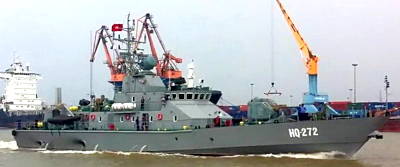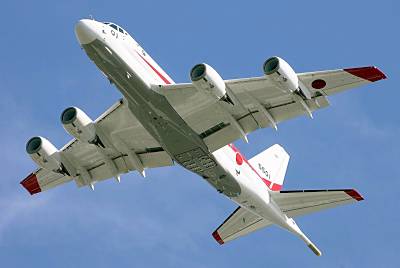WASHINGTON, Feb. 23, 2011 — The Defense Threat Reduction Agency is at work around the clock to protect American forces and citizens from nuclear, chemical and biological threats, the agency’s director said today.
Speaking to the Defense Writers Group, Kenneth A. Myers III, who also is director of the U.S. Strategic Command Center for Combating Weapons of Mass Destruction, said the “lines of defense” strategy aims to detect, interdict and defend against weapons of mass destruction.
“How do we make it harder, how do we create more lines of defense between the threats and the American people?” he asked.
The value and effectiveness of countering any threat from weapons of mass destruction is much greater at the source, Myers said.
“The first line of defense is at the source. The second line is detection [and] interdiction of these threats before they reach the American people,” he said. “But the other major part of the DTRA responsibility is that last line of defense, here at home, and that’s consequence management.”
In the nuclear arena, one task his agency performs is nuclear inspections. With the New Strategic Arms Reduction Treaty now in force, Myers said, his people are trained and ready to take on the inspection duties it authorizes.
Carrying out nuclear weapons inspections in Russia is a verification mission, Myers explained, adding that his agency’s teams also will escort Russian teams on their inspections in the United States.
“It’s a mission that we’ve had for a number of years,” he said. “It is one that we’re constantly trained for.”
In recent months that training has intensified, Myers said, as inspectors prepare to verify stockpiles of Russian nuclear weapons.
“We’ve been involved with this treaty for quite some time,” Myers said. “We’ve understood from the beginning of the process what would be required, … [and] we’re ready to go.” New START provides for fewer inspections than the previous START treaty, he said, in part because the new treaty combines some types of inspections, and also because “we’re talking about fewer weapons. The numbers are coming down.”
Judgments on treaty compliance are not part of his agency’s mission, the director said. “We are the inspectors — we don’t make verification judgments,” he said. “We report the facts. Judgments on compliance are made by other members.”
His agency’s inspectors, Myers said, are the best in the world. “I’m confident we’ll get all the information we need,” he added.
While the first inspections have not been scheduled, he said, teams are “waiting for the call.”
In contrast to the verification mission his agency will perform under the new START, much of the threat reduction effort focuses on finding and countering risks involving weapons of mass destruction, Myers said. His agency is responsible for much of the science and technology development in countering chemical and biological weapons, he explained, and also is the banker for chemical and biological defense funds.
The threat is diverse, and countermeasure development is spread across a range of efforts, Myers said.
He explained that whether a threat involves samples of harmful viruses or stockpiles of fissionable materials, his agency aims to build as many walls as possible between that threat and American citizens and service members.
For example, in countering biological weapons, the agency works both to contain the possible spread of disease agents, and also to develop vaccines against those diseases, he said, adding that the Ebola and Marburg viruses are an area in which the agency has seen “first-level success.”
It may take 15 to 20 years for the pharmaceutical industry to develop an effective drug to mitigate a threat, he said. “Our No. 1 goal is to shorten these timeframes — that is, to try to get solutions to the warfighter … and the American people, should we face these types of threats,” he said.
The potential for biological or nuclear weapons to be used against U.S. citizens spurs his agency to move quickly in putting defenses in place, Myers said.
“Our strategy is to cut the timelines, to move faster,” he said. “At the end of the day, you have a threat, and you have a solution. Trying to match them up as quickly as possible is the challenge.”
The Ebola virus, which occurs naturally in sub-Saharan Africa, may be as great a threat as a manmade weapon elsewhere, Myers pointed out.
“It’s hard for me to tell you that a biological weapon or a virulent disease is not a threat,” he said. “They’re all threats. A lot of the [relative risk involves] the likelihood of finding them in nature, and the ease or complex nature of manipulating them.”
Many health facilities in Africa store samples of diseases that occur naturally in the region, he said, noting such facilities often are close to areas that may be terrorist recruiting or operating grounds.
The Defense Threat Reduction Agency develops tools for the services to use in countering weapons of mass destruction, Myers said, citing the “massive ordnance penetrator,” a weapon the agency funded, tested, found effective, then handed off to the Air Force. The weapon is designed to attack hardened concrete bunkers and tunnels, where weapons of mass destruction components may be stored, he explained.
“The goal is to hold deeply buried targets and other potential threats … at risk. … I think we’ve proven we can hold deeply buried targets at risk,” Myers said. “We want to work to change the behavior, change the efforts by some to use facilities to develop weapons of mass destruction.”
The fact that the United States has not suffered a serious biological or nuclear attack is significant, though the threat remains real, Myers said.
“I go to work every day with 2,000 people whose job is to stop that from happening,” he said.
Agency programs focus on developing tools and strategies to detect, interdict and counter weapons of mass destruction, he said, in line with the president’s focus on defending against nuclear and biological threats.
“I believe that the policies [and] the programs that we have in place are making a big difference,” Myers said. “I think the people [and] the skill sets that we have focused on this problem are making a big difference.”
One thing that makes the agency effective, the director said, is that it has both a research and development arm and a full operations side.
“You walk down the hallway and you have a nuclear physicist, a microbiologist, and a former Special Forces operator sitting there talking together, trying to solve problems,” he said. “It really is a very unique institution.”
His agency’s partners in defending against weapons of mass destruction include the military services, the Department of Homeland Security, the National Security Agency, the Centers for Disease Control and Prevention, and embassies around the world, Myers said.
“To protect the American people, we need to develop as many lines of defense as possible,” he said.
Source:
U.S. Department of Defense
Office of the Assistant Secretary of Defense (Public Affairs)

 von
von 
